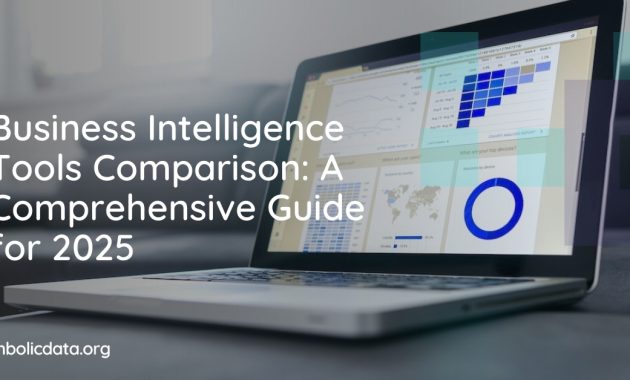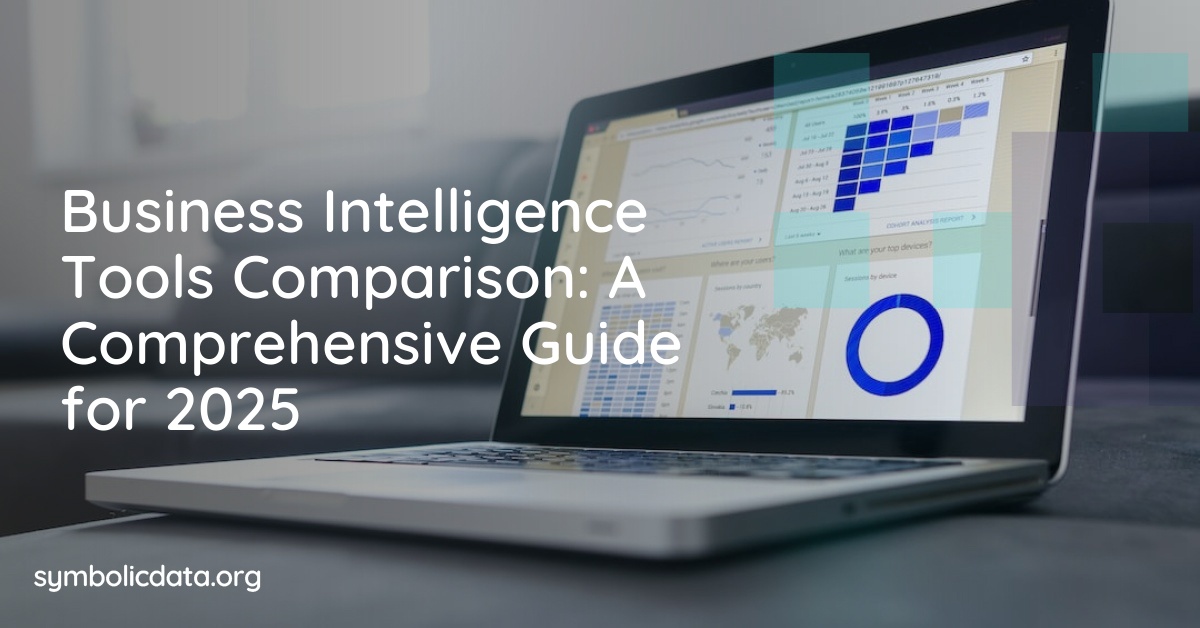
Beginner’s Guide to 9 Business Intelligence Tools To Watch in 2025
The landscape of data analysis is constantly evolving. Businesses of all sizes are increasingly reliant on data-driven decision-making. This necessitates the use of powerful Business Intelligence (BI) tools. These tools transform raw data into actionable insights. This guide will help you navigate the exciting world of BI. It focuses on tools that are poised to make a significant impact in 2025. This is a beginner’s guide. It’s designed to provide a comprehensive overview of the best BI tools.
Choosing the right BI tool can be daunting. This guide breaks down the key features. It also covers the benefits of each tool. It will help you make informed decisions. We will look at nine tools that are expected to lead the charge in 2025. These tools cater to various needs and skill levels. They all share a common goal: to unlock the power of your data. This is crucial for success in today’s competitive market.
Understanding the Power of Business Intelligence
Business Intelligence is more than just data analysis. It is a strategic approach to decision-making. It involves collecting, analyzing, and interpreting data. The goal is to identify trends, patterns, and insights. These insights drive better business outcomes. BI tools are the engines behind this process. They empower users to explore data effectively.
The benefits of BI are numerous. They include improved efficiency, cost reduction, and increased revenue. BI tools enable better forecasting and strategic planning. They also improve customer satisfaction. BI empowers businesses to make faster, more informed decisions. This leads to a competitive advantage. BI helps businesses adapt to changing market conditions.
Key Features to Look For in a BI Tool
When selecting a BI tool, consider several essential features. These features determine the tool’s effectiveness. They also affect its usability. Here are some key features to evaluate:
- Data Visualization: The ability to create compelling charts and dashboards. This makes data easy to understand.
- Data Integration: Seamless connection to various data sources. This includes databases, spreadsheets, and cloud services.
- Data Analysis: Advanced analytical capabilities. This includes statistical analysis, data mining, and predictive modeling.
- Reporting and Dashboards: Customizable reports and dashboards. These provide real-time insights and key performance indicators (KPIs).
- User-Friendliness: An intuitive interface. This allows users of all skill levels to explore and analyze data.
- Scalability: The ability to handle increasing data volumes and user demands.
- Collaboration: Features that facilitate teamwork. These include sharing dashboards and reports.
- Security: Robust security features to protect sensitive data.
- Mobile Accessibility: Access to data and insights on the go.
Nine Business Intelligence Tools for 2025
Here is a list of nine Business Intelligence tools. They are expected to be leaders in 2025. This list includes tools for various needs. It also considers different budgets and technical expertise. This guide is your starting point. It will help you to find the right BI tool.
Microsoft Power BI
Microsoft Power BI is a widely adopted BI tool. It offers powerful data visualization and analysis capabilities. Power BI integrates well with other Microsoft products. It is a popular choice for many businesses. Power BI is known for its user-friendly interface. It also offers a wide range of data connectors. This makes it easy to connect to various data sources. Power BI’s pricing is competitive. It offers options for individuals and organizations. Power BI is constantly updated with new features. This ensures it stays at the forefront of BI.
Tableau
Tableau is another industry leader in BI. It is known for its interactive dashboards and data visualization. Tableau caters to both business users and data analysts. Tableau offers a strong community. It provides extensive training resources. Tableau is a good option for complex data analysis. It is also well-regarded for its data blending capabilities. Tableau is used by many large enterprises. They rely on it for advanced analytics. [See also: Data Visualization Best Practices]
Qlik Sense
Qlik Sense is a self-service BI platform. It focuses on data discovery and exploration. Qlik Sense uses an associative data model. This allows users to uncover hidden insights. Qlik Sense is known for its ease of use. It offers a drag-and-drop interface. Qlik Sense is ideal for those new to BI. It also provides advanced analytics capabilities. Qlik Sense is a good choice for organizations seeking agility. They also want flexibility in their data analysis. Qlik Sense offers strong data governance features.
Looker
Looker is a modern BI platform. It focuses on data modeling and data governance. Looker is part of Google Cloud. It integrates well with other Google Cloud services. Looker is a good choice for data-driven organizations. It provides a single source of truth for data. Looker supports advanced analytics. It also provides collaboration features. Looker’s pricing can be higher than other tools. It is best suited for larger organizations. Looker is used by many major brands.
Sisense
Sisense is a BI platform. It is designed for complex data analysis. Sisense is known for its in-memory data processing. This enables fast query performance. Sisense offers a wide range of data connectors. It also provides advanced analytics capabilities. Sisense is a good choice for businesses with large datasets. It is also ideal for complex analytical needs. Sisense is a powerful tool for data-intensive industries. They can leverage it for actionable insights.
ThoughtSpot
ThoughtSpot is a search-driven analytics platform. It allows users to ask questions in natural language. ThoughtSpot uses AI to provide insights. This makes it accessible to all users. ThoughtSpot is ideal for self-service analytics. It empowers business users to explore data. ThoughtSpot’s search functionality is its key differentiator. It enables fast and easy data discovery. ThoughtSpot is a good choice for businesses. They want to democratize data access. ThoughtSpot is user-friendly and intuitive.
Zoho Analytics
Zoho Analytics is a cloud-based BI and analytics platform. It is part of the Zoho suite of business applications. Zoho Analytics is a good choice for small to medium-sized businesses. It is also a cost-effective option. Zoho Analytics integrates well with other Zoho apps. It provides a user-friendly interface. Zoho Analytics offers data visualization and reporting features. It also provides data integration capabilities. Zoho Analytics is a comprehensive BI solution. It offers powerful analytics at an affordable price.
Domo
Domo is a cloud-based BI platform. It offers a unified view of all business data. Domo is known for its real-time dashboards and alerts. Domo is designed for collaboration and data sharing. Domo is a good choice for organizations. They want a centralized BI platform. Domo offers mobile accessibility. This allows users to access data on the go. Domo is a powerful tool. It is best suited for larger enterprises.
Yellowfin
Yellowfin is a BI and analytics platform. It is known for its automated insights and data storytelling. Yellowfin is designed to help users understand data. It also helps them communicate insights. Yellowfin offers a range of data visualization options. It also provides advanced analytical capabilities. Yellowfin is a good choice for businesses. They want to make data more accessible. Yellowfin is also focused on user engagement. Yellowfin is a strong BI platform. It helps businesses leverage data for decision-making.
Choosing the Right Tool for Your Needs
Selecting the right BI tool depends on your specific needs. Consider factors like data volume, budget, and technical expertise. Evaluate the key features discussed above. Research the tools that best fit your requirements. Try free trials and demos. This helps you to assess the tool’s capabilities. The goal is to choose a tool that empowers your team. It allows them to make data-driven decisions. This guide provides a starting point for your selection process. It helps you navigate the complex world of BI tools.
The Future of Business Intelligence
The future of BI is bright. Emerging trends are transforming the landscape. These trends are shaping how businesses use data. The integration of AI and machine learning is growing. This will automate insights and improve predictive analytics. Cloud-based BI solutions are becoming more prevalent. These offer scalability and flexibility. Data governance and security are also becoming more important. Businesses must protect their data. They must also ensure data quality. The tools discussed in this guide will adapt to these changes. They are well-positioned to meet the evolving needs of businesses. Investing in BI is investing in the future. It is an investment in data-driven success.
Conclusion
This beginner’s guide has explored nine BI tools. These tools are expected to be significant in 2025. The right tool can transform your business. It will empower you to make better decisions. This is based on data. Consider the features and benefits. Then, select the tool that aligns with your needs. Embrace the power of BI. Unlock the potential of your data. This will drive your business forward. [See also: Data-Driven Decision Making]

